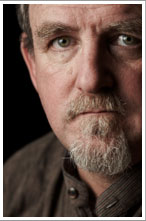David Wells on Preparing to Travel
David Wells, whose work I’ve been looking at for years, has a post up on the Olympus web site on Travel Tips for the Busy Season. It’s well worth your time as he goes through how he prepares for a trip and how he handles his shooting time.
 Why do I like it? He’s as paranoid as I am.
Why do I like it? He’s as paranoid as I am.
He also has some great tips:
When I am out photographing, every piece of gear I use has a place on my person. When I am done using that same piece of gear it goes back to the same place. The point of this is so I can find that piece of gear in a hurry the next time I need it. My flash cards are organized in the card wallet a certain way and I never deviate from that system.
Routine becomes ritual. If you’ve been in my classroom, you’ve heard that theme before. Cameras and lenses are always reset to a specific setting at the end of a shoot. Always.
And I love his definition of when the good light comes (and goes), what he calls the Wells Point:
The “Wells Point” is that time in the morning (or the evening) when the sun is at a 45 degree angle. At that moment, the shadow cast by an object is the same size as the object. For example, a parking meter that is four-feet high will cast a shadow that is four-feet long. If the shadow is longer than the object casting the shadow then that is the “good” light. If the shadow is shorter, that is the “bad” light. In between the morning and afternoon, “Wells Points” is the bad mid-day light, which is when I do my utmost to avoid photographing. It is a good time for portraits in the open shade, phone calls, emails, appointments, napping or having a coffee. Assuming I am working in a sunny place, I photograph from sunrise (or maybe before) through the morning “Wells Point.” In the afternoon, I photograph from the afternoon “Wells Point” until twilight and even into the night if I am working in a place with a lot of activity after dark.
I am totally stealing that shadow is longer idea … love it. Just, love it.
(Disclosure: I shoot with an Olympus camera for my personal work and, while I own the one I have now, Olympus did loan me some gear when I thought this was the tool I wanted.)